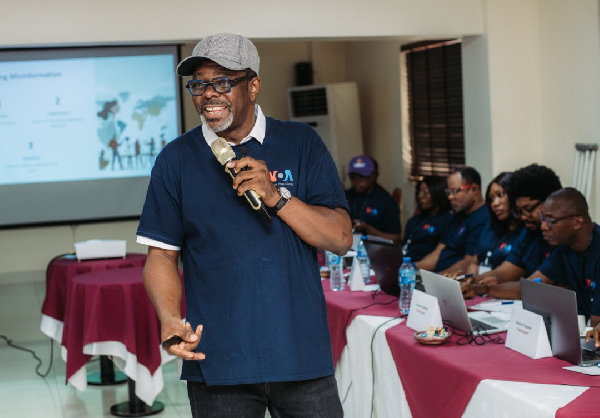International nonprofit Five Talents discusses the comeback of microloans
In recent years, though, something quieter and more hopeful has begun to take shape. In fragile communities across central and eastern Africa, small loans offered not by banks but by neighbours are helping people build livelihoods, resilience and dignity. And they are doing so on very different terms than before.
The idea is simple. When individuals gather to save, learn and invest together, they don’t just access finance. They change what finance looks like.
At Five Talents, we have seen this model work in countries such as the Democratic Republic of Congo, South Sudan and Kenya, where community-led savings and loans groups are planting the seeds of sustainable economic growth. But this isn’t the microfinance of the 2000s. Today’s microloans are not predatory or imposed from above. They are small, flexible and grounded in trust.
This article explores how microloans are being reimagined and why they are once again relevant for financial inclusion.
When microfinance first gained traction in the 1990s and early 2000s, it was celebrated as a revolutionary idea: small loans to help the poor lift themselves out of poverty.
However, many early programmes were designed around individual lending, often without the financial literacy support or social infrastructure that borrowers needed. Without safeguards in place, loans led to over-indebtedness, borrower stress, and, in some cases, coercive repayment practices. Studies highlighted how some schemes left people worse off, not better.
Today’s best microfinance programmes look very different. The focus has shifted from a pure credit model to one that prioritises savings, trust, and group accountability.
In the case of Five Talents, microloans are only introduced after members have spent months saving together and receiving training in financial literacy, business skills, and (where needed) basic numeracy. Crucially, the group lends to one another using their own pooled savings, and no outside capital is used. The result is a financial ecosystem that grows organically from within communities, not one imposed from outside.
This approach aligns with global best practices. Research shows that Savings Groups (especially when paired with training and mentoring) create stronger outcomes than credit-first models. They promote financial discipline, build resilience, and give communities the tools to manage their own resources. In Five Talents’ programmes, more than 95,000 small businesses have been launched using savings and small loans from within these community groups.
The structure of these groups also addresses some of the key weaknesses of earlier microfinance schemes. Interest rates are agreed locally, and loans are taken from the group’s own pooled savings, not external capital. Accountability happens through peer support, not enforcement. Repayment stress is lower. And because every member is both a saver and a borrower, the system encourages collective responsibility.
In other words, the microloans that are making a comeback are not really microloans as we once knew them. They are a tool within a wider model of financial inclusion, one grounded in dignity, participation, and, best of all, local knowledge.
They are working, quietly and consistently, in places that traditional finance still fails to reach.
Access to financial services remains a significant barrier for many communities, particularly in developing regions. According to CGAP, approximately 1.4 billion people worldwide lack access to formal financial services.
This exclusion disproportionately affects women, rural populations, and low-income households. In response, organisations like Five Talents have implemented community-based microfinance models that prioritise savings and group accountability.
The impact of such models is profound. For instance, in Burundi, participants in Five Talents’ programs have reported improved household income, better access to education and healthcare, and increased food security.
Moreover, these programs contribute to broader development goals. Financial inclusion is recognised as a key enabler in achieving several of the United Nations Sustainable Development Goals (SDGs), including poverty reduction and gender equality.
By fostering financial resilience and empowering individuals to invest in their futures, modern microfinance initiatives play a crucial role in building more inclusive and equitable financial systems.
The evolution of microfinance has been marked by both notable successes and significant challenges. Early models, while pioneering, often led to unintended consequences such as over-indebtedness among borrowers. Studies have shown that aggressive lending practices without adequate borrower assessment contributed to financial strain on clients.
In response, organisations like Five Talents have adopted a more holistic approach. By integrating financial literacy and business training with savings schemes, they aim to empower individuals to make informed financial decisions. This strategy not only promotes responsible borrowing but also fosters sustainable economic growth within communities.
Moreover, the emphasis on group lending and peer support has proven effective in mitigating risks associated with microfinance. Solidarity lending practices encourage collective responsibility and mutual support among borrowers, leading to higher repayment rates and stronger community bonds.
These experiences underscore the importance of continuous learning and adaptation in microfinance. By acknowledging past shortcomings and building upon successful strategies, the sector can better serve the financial needs of marginalised communities.
As we look to the future, the microfinance sector stands at a pivotal juncture. Technological advancements are reshaping the landscape, offering new avenues to enhance financial inclusion and operational efficiency.
Digital platforms, mobile banking, and AI-driven credit assessments are at the forefront of this transformation, enabling microfinance institutions (MFIs) to extend their reach and tailor services to the unique needs of underserved communities.
By integrating digital solutions into their community-based models, organisations can offer more accessible and efficient financial services. This integration not only streamlines operations but also empowers clients with tools to manage their finances more effectively.
However, the path forward is not without challenges. Ensuring data security, maintaining personal connections in digital interactions, and addressing the digital divide are important factors to consider.
MFIs must adopt strategies that balance technological innovation with the human-centric approaches that have been central to their success.
Collaboration will be key. Partnerships with fintech companies and policymakers (alongside local communities) can facilitate the development of inclusive financial ecosystems. By working together, people can create solutions that are not only technologically advanced but also culturally and contextually relevant.
Five Talents offers a compelling example of this kind of innovation. In eastern Africa, its adoption of CommCare (a digital data collection and monitoring platform) has helped improve the way local partners track savings group performance and deliver training.
This digital infrastructure enables field staff to access real-time information, identify group needs more quickly, and provide tailored support. Crucially, it does all this without compromising the community-led nature of the model.
By blending technology with relational, grassroots approaches, Five Talents shows how digital transformation can support the human foundations of microfinance.
By embracing change while staying true to their core values, MFIs can continue to empower individuals and transform communities in the years to come.













